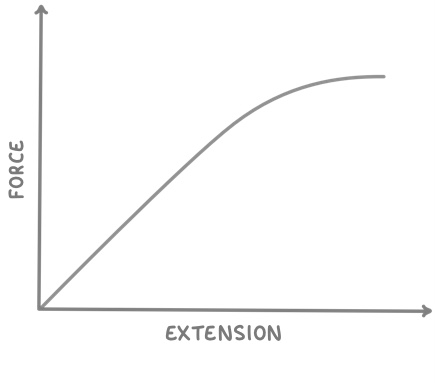Elastic Potential Energy
This lesson covers:
1The elastic force equation:
2The elastic potential energy equation:
3How to interpret force-extension graphs
lower / higher / spring
Every spring has a characteristic called the constant, which is a measure of how firm the spring is.
A spring constant means the spring is more firm.
A spring constant means the spring is less firm.
|
The formula that links force and extension is:
F =
|
A spring has a spring constant of 120 N/m, and an unstretched length of 0.5m.
What force is required to stretch the spring from 0.5m, to 0.6m?
12 N
72 N
60 N
1,200 N
|
A force of 5 N is applied to a spring, causing it to stretch from a length of 0.1 m, to a length of 0.15 m.
What is the spring constant of the spring?
50 N/m
0.25 N/m
33.3 N/m
100 N/m
|

When a spring is stretched, energy is transferred to its potential energy store.
Then when the spring is released, most of that energy is transferred to energy.
|
The formula for elastic potential energy is:
|
A spring with a spring constant of 4 N/m is stretched by 0.5 m.
How much elastic potential energy did it gain?
J
|
8 J of energy is used to stretch a spring by 0.1 m.
What is the value of its spring constant?
N/m
|
Below is a force-extension graph for a typical spring. |
 |
The gradient of the straight part of the graph tells us the: Elastic potential energy Elastic limit Limit of proportionality Spring constant
|
The area under the curve tells us the: Spring constant Elastic limit Limit of proportionality Elastic potential energy
|
The point where the line goes from straight to curved is referred to as the: Elastic limit Limit of proportionality Elastic potential energy Spring constant
|
|